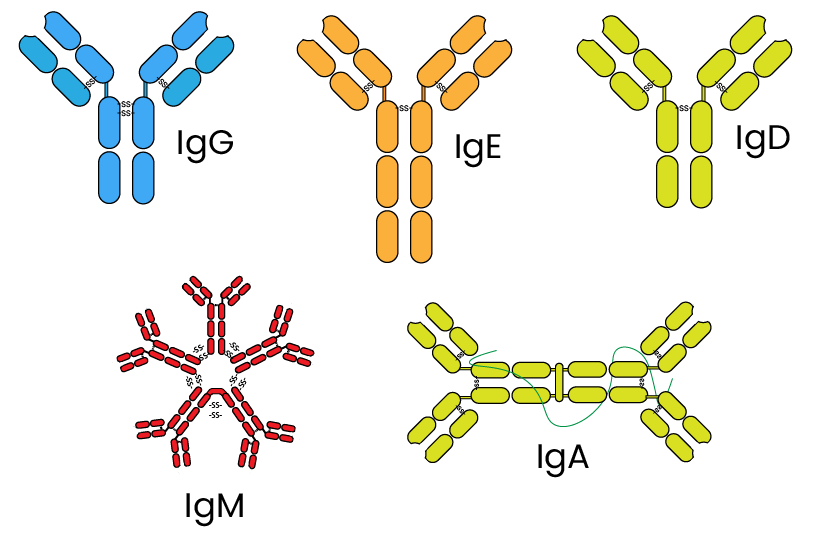Immunoglobulins, often referred to as antibodies, are essential components of our immune system, responsible for defending our bodies against a wide range of pathogens and foreign invaders. These remarkable molecules come in various classes, each with a unique structure and function tailored to combat different types of threats. The five major classes of immunoglobulins are IgG, IgM, IgA, IgD, and IgE.
First and foremost, IgG antibodies are the most abundant in our bloodstream, comprising about 75% of our total antibody population. They have a Y-shaped structure with two heavy chains and two light chains, forming two antigen-binding sites. IgGs are versatile, capable of neutralizing toxins, viruses, and bacteria, and can cross the placenta to provide passive immunity to newborns.
IgM antibodies, on the other hand, are pentameric, consisting of five Y-shaped units linked together by a joining (J) chain. They are the first line of defense against new infections, produced rapidly when the immune system encounters an unfamiliar antigen. IgMs are effective at agglutinating pathogens and activating the complement system, enhancing their ability to clear threats.
IgA antibodies exist in two forms: monomeric in the bloodstream and dimeric in mucosal secretions like saliva and tears. Their unique structure helps protect mucous membranes and prevent infections at the body’s entry points. IgD antibodies are primarily found on the surface of B cells, where they play a role in the activation of these immune cells.
Lastly, IgE antibodies, though present in small quantities, are essential in defending against parasitic infections and are associated with allergic responses. Their structure, like other immunoglobulins, features heavy and light chains, but they have a particular affinity for binding to receptors on mast cells and basophils, triggering the release of histamine and other mediators during allergic reactions.
In conclusion, immunoglobulin classes vary in structure and function, reflecting the body’s adaptability to diverse threats. Their unique configurations allow our immune system to combat pathogens with precision and efficiency, making antibodies a cornerstone of our body’s defense mechanisms against diseases and infections.
